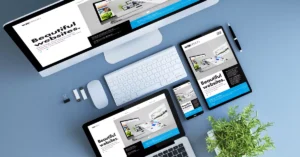What is anchor text in SEO with example?
Anchor text in SEO refers to the clickable words in a hyperlink on a website. Think of it as a label on a button; when you click it, you’re taken to another page or website. It’s a way to provide a hint about the content of the page you’re linking to, both for users and search engines.
For example, consider a website about baking. On one of its pages, there’s a sentence that says, “Check out our favorite homemade apple pie recipe.” In this sentence, the words “homemade apple pie recipe” are underlined and in a different color, indicating it’s a clickable link. This clickable part, “homemade apple pie recipe,” is the anchor text. When users click on it, they expect to be taken to a page that provides a recipe for homemade apple pie.
🔗 Icon Representation: The chain link icon often represents hyperlinks or anchor texts on many platforms.
Visual Representation of How Anchor Text is Coded:
<a href="https://example.com/apple-pie-recipe">homemade apple pie recipe</a>
Breaking Down the Code:
- <a> Tag: This is known as the “anchor tag.” It’s used to define hyperlinks in HTML, which is the language used to create web pages.
- href Attribute: Stands for “hypertext reference.” It specifies the URL (web address) to which the link points. In our example, the URL is “https://example.com/apple-pie-recipe”.
- Anchor Text: The visible, clickable text in the hyperlink. In our example, it’s “homemade apple pie recipe.” This is what users see and interact with on the webpage.
- </a>: This is the closing tag. Every opening <a> tag must have a corresponding closing </a> tag. It signals the end of the hyperlink.
Similarly, search engines use this text to understand the content of the linked page. It’s essential to choose anchor texts that are clear and relevant to the linked page’s content. This helps in improving the user experience and can also positively impact a website’s search engine ranking.
In short, anchor text is a small but crucial element in SEO, guiding users and helping search engines understand your content better.
How to Optimize Your Anchor Text Strategy for SEO?
How Does Anchor Text Affect SEO?
Best Practices for Anchor Text
To make your anchor text work well for both users and search engines:
What Not To Do With Anchor Text
Conclusion
Anchor text is a small but essential part of a website. It helps guide users and tells search engines about the content of linked pages. By following these simple guidelines, you can make your website more user-friendly and improve its visibility in search engine results.
If you’re interested in further enhancing your website’s SEO, consider exploring the following resources:
- On-page SEO list
- For those with a packed schedule, hire an SEO expert to take care of your website’s optimization needs.




